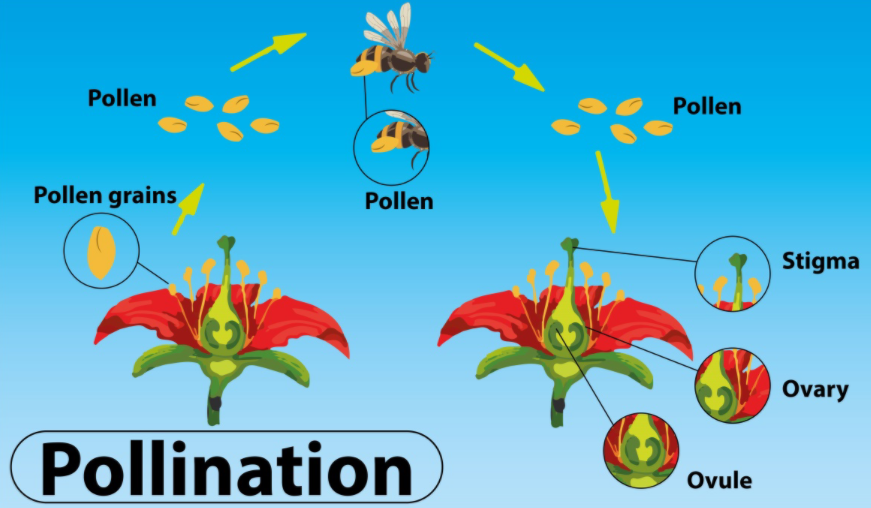
Define pollination. Explain the different types of pollination. List two agents of pollination? How does suitable pollination lead to fertilization?
Answer
552k+ views
Hint: It is a process of sexual reproduction in plants. Its goal is to create offspring for the next generation. It is one of the ways that plants can produce offspring is by making seeds.
Complete answer:
Pollination: It is the process of transfer of the pollen grains from the anther to the stigma of a flower. The androecium is the male reproductive organ of a flower while the gynoecium is the female reproductive organ of a flower.
The two agents of pollination are:
- Insects
- Birds
The process of pollination leads to fertilization in the manner as, In the flowering plants, the ovules are contained within a hollow organ called the pistil (a basic unit of the gynoecium), and the pollen is deposited on the pistil’s receptive surface, the stigma. There the pollen germinates and gives rise to the pollen tube, which grows down through the pistil toward one of the ovules in its base. The growing ovule then transforms itself into a seed of the plant.
Additional Information: -Studies of pollination are invaluable for understanding the evolution of the flowering plants and their distribution in the world today.
-Pollination by insects probably occurred in primitive seed plants as their reliance on other means is an event of their recent evolutionary development.
-The most prevalent insect forms in the earlier times were primitive beetles; no bees and butterflies were present.
Note: Self-pollination is the transfer of pollen grains from the anther to the stigma of the same flower of the plant while cross-pollination is the transfer of pollen grains from the anther to the stigma of a genetically different flower of another plant.

Complete answer:
Pollination: It is the process of transfer of the pollen grains from the anther to the stigma of a flower. The androecium is the male reproductive organ of a flower while the gynoecium is the female reproductive organ of a flower.
The two agents of pollination are:
- Insects
- Birds
The process of pollination leads to fertilization in the manner as, In the flowering plants, the ovules are contained within a hollow organ called the pistil (a basic unit of the gynoecium), and the pollen is deposited on the pistil’s receptive surface, the stigma. There the pollen germinates and gives rise to the pollen tube, which grows down through the pistil toward one of the ovules in its base. The growing ovule then transforms itself into a seed of the plant.
Additional Information: -Studies of pollination are invaluable for understanding the evolution of the flowering plants and their distribution in the world today.
-Pollination by insects probably occurred in primitive seed plants as their reliance on other means is an event of their recent evolutionary development.
-The most prevalent insect forms in the earlier times were primitive beetles; no bees and butterflies were present.
Note: Self-pollination is the transfer of pollen grains from the anther to the stigma of the same flower of the plant while cross-pollination is the transfer of pollen grains from the anther to the stigma of a genetically different flower of another plant.

Recently Updated Pages
Master Class 12 English: Engaging Questions & Answers for Success

Master Class 12 Business Studies: Engaging Questions & Answers for Success

Master Class 12 Economics: Engaging Questions & Answers for Success

Master Class 12 Social Science: Engaging Questions & Answers for Success

Master Class 12 Maths: Engaging Questions & Answers for Success

Master Class 12 Chemistry: Engaging Questions & Answers for Success

Trending doubts
What are the major means of transport Explain each class 12 social science CBSE

Which are the Top 10 Largest Countries of the World?

Draw a labelled sketch of the human eye class 12 physics CBSE

Explain sex determination in humans with line diag class 12 biology CBSE

The pH of the pancreatic juice is A 64 B 86 C 120 D class 12 biology CBSE

Explain sex determination in humans with the help of class 12 biology CBSE




